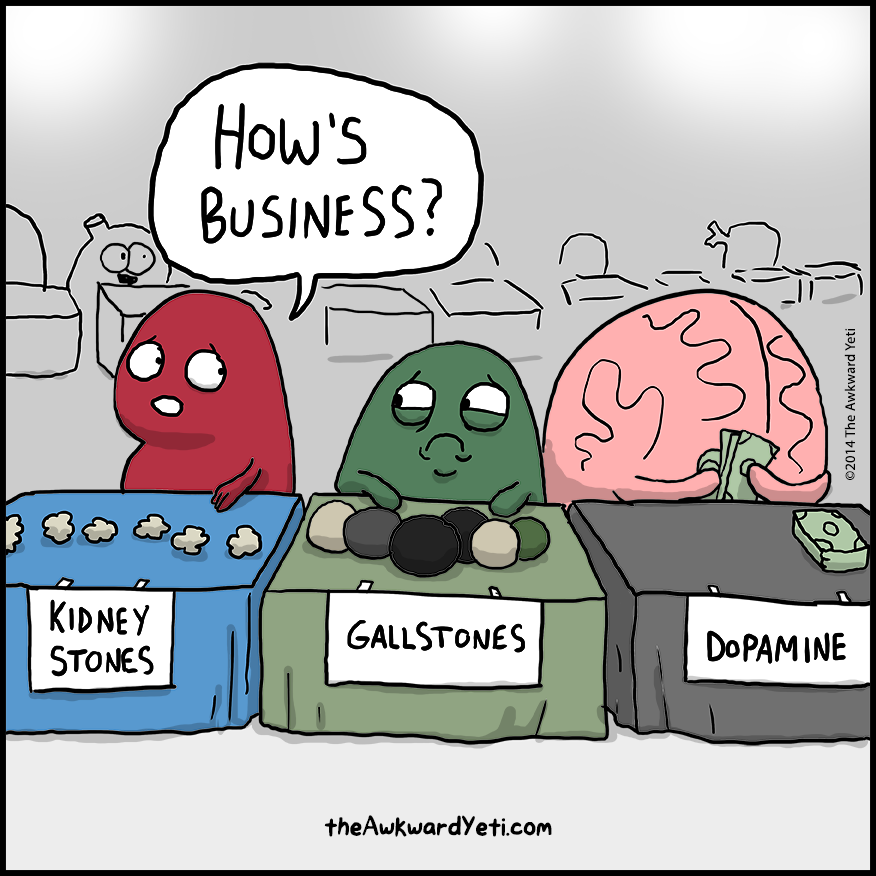I wish I was more creative. Do you ever catch yourself saying that? Well the truth is, you are.
It’s not some mystical skill that some people have and others do not. It’s present in us all, but we often don’t see creativity beyond the usual suspects.
Art, design, and marketing are realms that we believe creativity are ever present, but in reality, creativity is in every field. Creativity is simply any novel thought that is useful in a given situation.
This means you can be creative in farming, in business, in manufacturing, in finance, in parenting, in teaching, and so on. There’s no definite space that creativity exists in.
For some reason this narrative of being creative was created, but when you look back through history, our understanding of it was quite different.
Creativity Through History
E
udaimonia is an ancient Greek word that was for the highest degree of human happiness. When translated it means “well-daemoned” or well taken care of by some divine creative spirit guide. This idea is seen in history, from muses to daemons, as many cultures have viewed creativity as something beyond yourself.
In short, each individual had a caretaker to keep their ego in check, allowing the artists the ability to express themselves without fear or worry. It was an eternal part of their soul that watched over and inspired them.
In Greek mythology this idea manifests in the form of 9 Muses or Goddesses of the arts and sciences, who are the children of Zeus and Mnemosyne. They are as follows:
Calliope: Muse of Epic Poetry
Euterpe: Muse of Music
Klio: Muse of History
Erato: Muse of Love Poetry
Melpomene: Muse of Tragedy
Polyhymnia: Muse of Hymns
Terpischore: Muse of Dance
Thalia: Muse of Comedy
Urania: Muse of Astronomy
Theses muses served as inspiration for individuals to strive to create and make what their minds envisioned.

The 9 Muses
Along the same lines are the genii or daemons. For men, these were called the Genius and for women it was the Juno, but the roles were the same. They were daemons that were with you from the moment of your birth until the end of your days.
The thought here was that every human beings abilities were attributed to their soul or their genii – the divine nature that is inside every person. These genii allowed individuals to express themselves, to be creative.
From the historical perspective, it’s clear they viewed creativity as present in everyone and everything. It wasn’t something you had or didn’t. It was something that was there. These daemons or muses or genii would visit you, share inspiration and ideas, but it was up to the individual to use them or not.
I love the idea of a daemon, floating around me, feeding me inspiration throughout my life. Unfortunately, I think it may be upset with me that I’ve not been as diligent when inspiration does strike.
While the idea of daemons and muses may work for the spiritual sort, the rest of us that are more analytical, probably want a more grounded understanding of creativity. That’s where the science comes into play.
Creativity Through Science
I
t’s always been a challenge figuring out how to measure creativity, but one group of researchers found a clever approach that combined the improvisation of freestyle rap and fMRI’s.
Creativity has been viewed as a two part process. There is an initial improvisatory phase that is where new ideas are formed, followed by a phase of refinement and revision. In this case, the researchers were hoping to gain insight into this initial improvisation phase of creativity.
The study observed rappers in two states: improvised and conventional. Using the same beat for both situations, the rappers were first scanned while they engaged in spontaneous, freestyle rap and then scanned again while they rapped a well-rehearsed set of lyrics.
The distinction between the two tasks is clear and the results are even more intriguing. The researchers found that when in a creative state (improvised), some of the everyday brain regions are completely deactivated, while others that we don’t use regularly, light up:
“We think what we see is a relaxation of ‘executive functions’ to allow more natural de-focused attention and uncensored processes to occur that might be the hallmark of creativity,” says Braun.
More or less, we’re in a relaxed state, one that allows our brain to roam free and explore. The parts of our brain (dorsolateral prefrontal cortex) focused on decision making and regulation showed less activity, while typically inactive parts of the brain (medial prefrontal cortex) related to context, association, and emotion, were far more active.

Orange is increased activity, while blue is decreased activity during improvisation.
What’s even more interesting is that there was also a hint of our friendly daemon in the study:
…ongoing actions, moment to moment decisions and adjustments in performance may be experienced as having occurred outside of conscious awareness [when engaging in creativity].
Pretty incredible when you think about it. Moreover, the study gave us an important hint about activating our creativity, you need to be in a different state, one that is not concerned with the typical day-to-day tedium. A relaxed state of mind, if you will. Of course creativity is not so simple and the other pieces to the puzzle come from dopamine and distraction.
As far as dopamine, research has shown a strong link between its presence and creativity (albeit in crazy people, but creativity is of course a bit crazy itself, isn’t it?). As dopamine is released, it gets taken up by certain regions of the brain (as seen above), which increase activity and trigger more creative wanderings.
Through our own experience, we also know that dopamine doesn’t always lead to creative action. While it may be a component, it’s not alone in triggering creativity.

Dopamine is a busy guy.
This is where distraction enters the picture.
Much like Einstein’s combinatory play, taking violin breaks whenever he got stuck on a problem, distraction allows you to engage in thinking on a subconscious level.
A distraction may provide the break you need to disengage from a fixation on the ineffective solution.’Shelley H. Carson
Research in this area has shown that it is often the seemingly sub-optimal parts of your day that you are most creative (i.e. the most distracted parts). In essence, you allow your mind to incubate and work through ideas and solutions, without the full force of your focus. These distractions let your mind wander and is it does, those moments of insight and creativity will bubble up into your conscious mind.
______________
I
t seems that these three pieces create the full picture of creativity: a relaxed, dopamine flooded, and distracted state of mind. Sounds a bit like a puppy, to be honest, but it is that state of play or child-like behavior that seems to be well-suited to creative endeavors.
This is why you’ll find yourself bursting with creativity at the oddest of moments: while taking a warm shower, going for long walks, or driving (not during rush hour!). Your mind is relaxed and distracted enough to engage a different part of your brain.
The question of course is what do you do with all this information? How can you use this to engage your creative self on the regular? While I don’t think inducing creativity really works, there are some simple steps to take that can ensure you get the most of your creative mind.
1. Write Everything Down
Good ideas and moments of clarity are rare. The last thing you want to do is waste a moment of brilliance because you forgot about it. Make sure you write everything down when you stumble across it. This is why I always carry around my commonplace book, but whether it’s your phone or a journal, make sure to document ideas as they come in. Otherwise those moments of inspiration are lost forever.
2. Engage in Relaxing Activities
Like I said, inducing creativity isn’t the best way to go about it, but you can do the little things that may trigger a moment of insight. Going for long walks, cooking a meal, meditating for a few minutes, or taking a warm shower all work. More importantly, if you engage in things that are both enjoyable to you and take your mind off your daily grind, you’ll be one step closer to triggering your creative mind.
3. Distract Yourself
When you’re stuck, the answer isn’t always to power through. Take a page out of Einstein’s book and go do something completely unrelated. Allow your mind to marinate in that problem without your attention. You’ll be surprised what your subconscious mind can accomplish without you pressuring it.
4. Act On Your Ideas
Finally, you have to take action when you get ideas. Let me paint a picture for you.
Have you ever had a great idea, wrote it down, and then forgot about it for awhile? Despite all the excitement and interest you initially had in that moment, it slowly fades the longer you take to act on it. This can take years or days, depending on what it is, but the point is that ideas and creativity aren’t timeless. Your inspiration won’t last forever, so the more you can engage it when it strikes, the better.
You can’t use up creativity. The more you use the more you have.Maya Angelou
In the end, the most important takeaway is that creativity is in us all. Whether it’s a spiritual daemon or chemical reactions in our brain, everyone is capable of creativity and the more you engage it, the more it will flourish.
Embrace your creativity.

